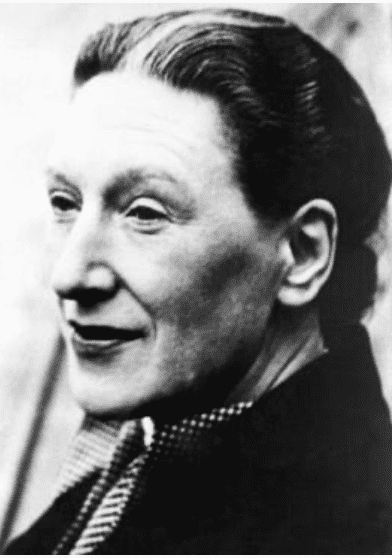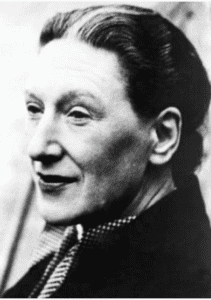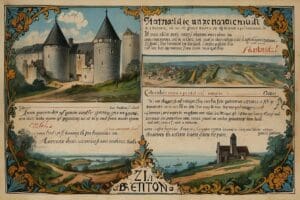Irish Author Elizabeth Bowen | Life and Legacy

Updated On: January 26, 2024 by Ciaran Connolly
Elizabeth Bowen is a famous Irish author who is remembered for her literary works. She is known for her novels and short stories, which have been made into television and film. Some of her most famous novels include The Last September, The House in Paris, and The Heat of the Day.
Continue reading to discover the amazing life and legacy Elizabeth Bowen has left in the world of literature.
Elizabeth Bowen from Birth to Death

Irish author Elizabeth Bowen (Elizabeth Dorothea Cole Bowen) was born in Herbert Place, Dublin, on 7 June 1899. As a child, her parents brought her to Bowen’s Court, at Farahy, County Cork. However, in 1907 her mother took her to England as her father became mentally ill. When you calculate age of Elizabeth Bowen, she was only 18 at that time. She became a literary figure in the same city and is still remembered due to her thoughts. Her mother died in 1912 and the young Elizabeth Bowen was raised by her aunts in Hythe.
The young Elizabeth Bowen was educated at Downe House School, Berkshire. Here, she decided to pursue writing. She became a member of the Bloomsbury Group, a group for young writers. While a member she became friends with Rose Macaulay, an English author, who helped her find a publisher for her first collection of short stories called “Encounters”. She published “Encounters” in 1923, the same year she married Alan Cameron. This marriage was never consummated. However, the young Elizabeth Bowen engaged with various other relationships, including relationships with Charles Ritchie, Seán Ó Faoláin, and May Sarton.
Later, in 1930, Elizabeth Bowen inherited Bowen’s Court. However, she remained in England and made frequent visits back to Ireland. She did not return to Ireland until her husband retired in 1952. They then settled in Bowen’s Court. After settling here, he died only a few months later. As a traveling widow, Elizabeth Bowen struggled to maintain Bowen’s Court. She then had to sell the house in 1959, and it was demolished the following year, in 1960. She then spent a number of years without a permanent home before settling in Church Hill, Hythe in 1965.
Her final novel “Eva Trout, or Changing Scenes” was published in 1968 and was awarded the 1969 James Trait Black Memorial Prize. Soon after, in 1972 she fell ill. She was spending Christmas in Kinsale, County Cork with Major Stephen Vernon and Lady Ursula, but was hospitalised soon after arriving. She had developed Lung Cancer, and only a couple of months later, on 22 February 1973, she died at the age of 73. She was buried with her husband in Farahy Churchyard, County Cork, close to Bowen’s Court Gate.
Elizabeth Bowen and her Legacy
Elizabeth Bowen has left a permanent mark on the literary world. This Irish author is studied widely today in schools and universities globally.
The first biography of Elizabeth Bowen was written only four years after her death by Victoria Glendinning. It was called “Elizabeth Bowen: Portrait of a Writer” and was published in 1977. This biography won the James Tait Black Memorial Prize in 1987. Following this, Victoria Glendinning published a book about the relationship between Elizabeth Bowen and Charles Ritchie in 2009 called “Love’s Civil War: Elizabeth Bowen and Charles Ritchie: Letters and Diaries, 1941- 1973”.
In 2012 English Heritage placed a blue plaque at Elizabeth Bowen’s home Clarence Terrace at Regent’s Park, and a second was placed at her residence at the Coach House, The Croft in Headington in 2014.
The Literary Work of Elizabeth Bowen
You can find a list of all Elizabeth Bowen’s literary works here.
The Demon Lover
Irish author Elizabeth Bowan’s short story The Demon Lover was one of her most famous short stories which was based in London during World War 2. You can read The Demon Lover here.
The Demon Lover Summary
This short story follows mother Kathleen Dover who returns to Dublin during the war to collect her family belongings. While home, she finds a letter about an appointment she had made with a soldier who died during World War 1. However, as it has no stamp or return address she thinks it may have arrived supernaturally. This letter reminds her of the love she had for him. She was promised to meet him, now receiving this letter she did not know how or where, but she knew she had to keep this promise. She then set off to meet him, however, her taxi is also under supernatural influence. The driver appears to be her ex-fiancé. The story ends dramatically as she is screaming, trying to escape the taxi, but is taken into London’s deserted streets.
Adaption
Elizabeth Bowen’s The Demon Lover was made into an episode of “Shades of Darkness”. This episode was aired on 21 June 1986 and follows Elizabeth Bowen’s original storyline.
The Last September
The Last September is a novel written by Irish author Elizabeth Bowen which was published in 1929. John Banville adapted this novel into a screenplay and the film was released in 1999. This novel takes inspiration from the aftermath of World War 1.
The Last September Summary
The Last September opens in Danielstown, County Cork. We are introduced to Sir Richard and Lady Naylor, who are welcoming their friends Hugo and Francie Montmorency into their estate. It is set after World War 1 and has a focus on the families attempting to live in the aftermath. A major issue is social class, everyone is expected to act in a specific way according to their class due to the uncertain future. The people of Danielstown spend a lot of their time playing tennis and attending dances, there is an interest in Lois (niece of the Naylors) and her relationship with British officer Gerald Lesworth. Lois is struggling with ‘finding herself’.
Lois’s struggles suddenly become irrelevant when Miss Marda Norton arrives in Danielstown. Mara’s visit is a relief for Lois, however, is an inconvenience for Lady Naylor. Lois and Marda become good friends. The violence is increasing between the British Army and the Royal Irish Constabulary. The son of the Naylor’s family friend, Peter Conner is captured, and the Irish resistance feels threatened by this. At this point, the atmosphere of the novel is changing and becoming more desolate. The middle section ends with Marda leaving for England, and the characters lives gradually return to how they were before her arrival.
The final section of The Last September shows Lois back in a solid relationship with Gerald. However, she is unable to make a decision about her future as, firstly, she is delayed by Lady Naylor’s machinations, and secondly, Gerald dies. Due to his death, the issue remains eternally unresolved. There is a theory that he may have been killed by Peter Connor’s friends. Following this Lois, Laurence and the Montgomery family leave the Naylor household. The following February the Naylor family estate, along with many other great homes, are set alight. This was organized by the same men who arranged Gerald’s death.
You can find The Last September here online.
The Last September Quotes
But surely love wouldn’t get so much talked about if there were not something in it?
A smell of sandalwood boxes, a kind of glaze on the air from all the chintzes numbed his earthy vitality, he became all ribs and uniform
She thought she need not worry about her youth; it wasted itself spontaneously, like sunshine elsewhere or firelight in an empty room
The House in Paris
The House in Paris is the fifth novel written by Irish author Elizabeth Bowen. It is set in both France and the United Kingdom after World War 1. This novel was first published in 1935, and has been called Elizabeth Bowen’s most complex work.
The House in Paris Summary
Similar to The Last September, The House in Paris is split into three parts: The Present, The Past, and The Present.
The first section of The House in Paris opens with Henrietta travelling to Menton to see her grandmother. Henrietta stops in Paris to meet with the Fisher family. The novel opens on Henrietta and Miss Fisher travelling to Madam Fisher’s house. While at Madam Fishers, Henrietta us told that she will be spending the day with 9-year-old Leopold. She is also warned not to ask Leopold many questions as he will be meeting his mother for the first time on that evening. However, Miss Fisher and Henrietta receive a telegram telling them that Leopold’s mother will not be meeting him.
The second section of The House in Paris, The Past, focuses on Leopold’s mother and father (Karen and Max) meeting years after Leopold’s conception. While having their affair, Max was engaged to Miss Fisher and Karen was engaged to a man named Ray Forrestier. Karen and Max discuss the possibility of marrying each other and breaking off their current relationships. However, they decide against this. Instead, Karen marries Ray and gives Leopold up for adoption, and Max commits suicide.
The third and final section of The House in Paris continue from the first section. Ray picks Leopold up from Madam Fisher’s and takes him to meet his mother, as Karen was too afraid to meet him. Ray believes this is the right thing to do, he and Karen have had problems throughout their marriage due to Leopold’s existence and adoption. On their way home, they drop Henrietta off at the train station so she can continue her travels to Menton.
The House in Paris Quotes
Henrietta knew of the heart as an organ: she privately saw it covered in red plush and believed that it could not break, though it might tear
Meeting people unlike oneself does not enlarge one’s outlook; it only confirms one’s idea that one is unique
Karen, her elbows folded on the deck-rail, wanted to share with someone her pleasure in being alone: this is the paradox of any happy solitude
The Death of the Heart
Elizabeth Bowen’s Death of the Heart was published in 1938 and is set in the period between the first and second World Wars. Elizabeth Bowen called it a pre-war novel, which is set in a time with increased anxieties and stress. This novel has been named one of the 100 best modern novels by Time, and the Modern Library.
The Death of the Heart Summary
The Death of the Heart focuses on the young 16-year-old heroine Portia Quayne, it opens soon after she arrives in London. She has moved to London to live with her half-brother, Thomas, and his wife Anna, due to her mother passing making her an orphan. Her father passed before this. Portia was the result of an affair between her mother and already married father. He then left his wife and married Portia’s mother. Portia spent the majority of her life travelling with her mother and father, therefore, settling into London has been a challenge for her. Thomas and Anna find it difficult to welcome Portia into their home as she is awkward, and a constant reminder of his father’s affair. Portia’s only friend at this time is the housekeeper, Matchett.
Portia, unsurprisingly, becomes lonely and is longing to understand this upper-class lifestyle she is witnessing. She is awkward, innocent, and different from those around her. Therefore, she begins to log everything she witnesses in a diary in an attempt to analyse and understand these people she is among. Anna finds this diary and all of its contents, she is outraged at Portia’s observation of her flaws and vents all her anger to a friend St. Quentin.
Portia discovers romance as she falls for Eddie, a man who works with Thomas. Her love for his shows her innocence, but her love for him is intense. However, she is unaware that Eddie’s affectionate actions towards her may not be genuine. We, the reader, learn that Eddie’s love life consists of meeting, seducing, and leaving women. That he has no intention of forming a romantic, emotional attachment with Portia. Portia eventually learns that his feelings are not genuine whenever Thomas and Anna travel to Italy and she is sent to stay with Mrs Heccomb. Eddie visits her here, upon discovering his lack of genuine feelings for her, Portia is devastated, from experiencing this she loses her innocence and trust in people.
St. Quentin tells Portia that Anna discovered her diary and all of its contents, following this revelation, Portia runs away. She tries to win over Eddie but is rejected and we learn that he has been Anna’s lover throughout. She then finds shelter in a hotel room with Major Brutt. From his experiences in the first world war, he does not fit into society. Portia begs him to run away with her, he is horrified and contacts Thomas and Anna. Portia declares that she will not return unless Thomas and Anna “do the right thing”, Thomas and Anna send Matchett to collect Portia.
This ending is ambiguous, Portia’s fate is decided by each reader own personal imagination. Elizabeth Bowen has not given an easy, or any, answer concerning Portia’s future.
The Death of the Heart Quotes
Darling, I don’t want you; I’ve got no place for you; I only want what you give. I don’t want the whole of anyone…. What you want is the whole of me-isn’t it, isn’t it?-and the whole of me isn’t there for anybody. In that full sense you want me I don’t exist
Pity the selfishness of lovers: it is brief, a forlorn hope; it is impossible
Innocent are so few that two of them seldom meet-when they do meet, their victims lie strewn all round
The heart may think it knows better: the senses know that absence blots people outl am much too influenced by people’s manner towards me-especially Anna’s I suppose. Directly people attack me, I think they are right, and hate myself, and then I hate them-the more I like them this is so
The Heat of the Day
Irish Author, Elizabeth Bowen’s novel The Heat of the Day was published in 1948 in the U.K, and in 1939 in the U.S. This novel is set during World War II, and explores the lives of characters who work for opposing secret services.
The Heat of the Day Summary
The novel opens in a concert in London and we are introduced to Louie and Harrison. Louie is a young woman whose husband is fighting for the British forces in the war. Louie flirts with Harrison, who quickly rejects her affections. Whenever the concert ends, we follow Harrison to a flat which is rented by Stella Rodney. Harrison is in love with Stella. However, Stella is in love with another man, Robert Kelway. Harrison has doubts about Robert and believes him to be a german-nazi spy. Harrison tells Stella of his suspicions and promises not to report Robert if she leaves him and becomes his. Stella rejects this blackmail but does think about the possibility that Robert could be a spy. Stella continues her relationship with Robert, meets his eccentric family and continues to reject Harrison. At this time Stellas son, Roderick, comes to visit her.
The novel tells us that Roderick had inherited the Irish estate, Mount Morris. Stella leaves for Ireland to take care of the estate for Roderick. While in Ireland, Stella is reminded of her youth and childhood, it reminds her of her engagement and marriage to Roderick’s father. However, they later divorced. While in Ireland, Stella asks Robert if Harrison’s suspicions are true. Robert denies these accusations and proposes to Stella.
During this time, Roderick visits his cousin, Nettie. He wants to know if she wants to return to Mount Morris. While visiting Nettie, he learns that his parents’ divorce was not his mother’s doing, rather, it was his father who fell for an army nurse and initiated the affair which ended their marriage. Roderick questions his mother with this information, she replies that everyone assumed that she initiated the divorce, however, a phone call from Harrison interrupts the conversation, Stella agrees to have dinner with Harrison to escape her questioning son.
While at this dinner we learn that Stella lied about the true reason her marriage ended, as she didn’t want people thinking that she was a fool. Harrison announces that he now has to arrest Robert as she released his suspicions about Robert. Before Stella can reply, Louie (from the concert) recognises Harrison and interrupts the conversation. Stella uses this distraction to mock Harrison, however, she hurts his feelings.
Robert, becoming aware and scared that the British government are becoming suspicious of him, announces to Stella that he is, in fact, a Nazi German spy. Stella is repulsed by this, and their differing beliefs, however, she loves him and does not want this new information to destroy their relationship. However, Robert decides to leave her, as their different lives and beliefs would cause them to hate each other. He kills himself by jumping off the roof of Stella’s building.
The novel ends by showing us an overview of the following years. Roderick settles in Mount Morris and decides not to question the truth of his parents’ divorce. We learn that Harrison’s first name is Robert, and he continues to love Stella, he visits her during a bombing. We do not learn if they become romantically involved. Louie gets pregnant due to an affair, however, her husband dies in battle and never finds out. She leaves London to raise her son and raises him as if he were her husband’s child.
The Heat of the Day Characters
Stella Rodney is the protagonist of the novel. She is described as an attractive, sophisticated, and independent middle-aged woman. She works for a government agency XYD, she is guarded and not inquisitive. She is very patriotic as her brothers died serving Britain in the First World War.
Robert Kelway is an attractive man in his late thirties who is in love with Stella. He remains in London during the war as he was injured at the Battle of Dunkirk, he often limps from his injury. He has fascist beliefs due to his injury, and due to his authoritarian mother emasculating his father.
Harrison is an English counterspy. He is quiet, emotionally idiotic, and has uneven eyes. We only discover that his name is Robert at the end of the novel.
Roderick Rodney is Stella’s son. He is a young soldier in training
Louie Lewis is a 27-year-old working-class woman. Her husband is fighting in the war, and her parents died, therefore she is alone in London.
The Heat of the Day Quotes
By the rules of fiction, with which life to be credible must comply, he was as a character “impossible” – each time they met, for instance, he showed no shred or trace of having been continuous since they last met.
That Sunday, from six o’clock in the evening, it was a Viennese orchestra that played
There can occur in lives a subsidence under the soil, so that, without the surface having been visibly broken, gradients alter, uprights cant a little out of the straight.
The restaurant was waning, indifferently relaxing its illusion: for the late-comers a private illusion took its place. Their table seemed to stand on their own carpet; they had a sensation of custom, sedateness, of being inside small walls, as though dining at home again after her journey. She told him about her Mount Morris solitary suppers, in the middle of the library, the rim of the tray just not touching the base of the lamp… the fire behind her back softly falling in on its own ash-no it had not been possible to feel lonely among those feeling things
Irish Author Elizabeth Bowen on Screen
Due to the popularity, and amazing stories told within Elizabeth Bowen’s novels, it is no surprise that her novels and short stories made it onto the Big Screen. Her work has also featured in T.V. series such as BBC2 Playhouse, Ten from the Twenties, and The Twentieth Century.
Elizabeth Bowen’s first novel to T.V. adaption was “The Death of the Heart” in 1956. This was adapted into a T.V. movie by screenwriters Anne Allan and Julian Amyes.
Following this, “The House in Paris” was adapted and made into a T.V. movie in 1959. This adaption stars Pamela Brown, Vivienne Bennett, Trader Faulkner, and Clare Austin.
The Death of the Heart was adapted into a second T.V. movie in 1987 starring Patricia Hodge, Nigel Havers, Robert Hardy, Phyllis Calvert, Wendy Hiller, and Miranda Richardson.
Following this, The Heat of the Day was made into a T.V. movie in 1989 by Granada Television, starring Patricia Hodge, Michael Gambon, Michael York, Peggy Ashcroft and Imelda Staunton.
Finally, in 1999 The Last September was made into a film by screenwriter John Banville, starring Maggie Smith, David Tennant, Michael Gambon, and Fiona Shaw.
Elizabeth Bowen | Creations to Triumph
Irish Author Elizabeth Bowen spent her life creating stories for people to enjoy, and learn from. However, did she achieve much in terms of Literary accreditation?
In 1937 she became a member of the Irish Academy of Letters. The Irish Academy of Letters was founded by W.B. Yeats and George Bernard Shaw. The Irish Academy of Letters was created to publicly reward literary achievement and to encourage opposition against literary censorship.
The same year Elizabeth Bowen published The Heat of the Day (1848), she was awarded a CBE, a Commander of the Most Excellent Order of the British Empire (within the British Order of Chivalry), for her literary work in the Arts.
Her final novel Eva Trout, or Changing Scenes won the 1969 James Tait Black Memorial Prize and was shortlisted for the 1970 Man Booker Prize.
The Royal Society of Literature made her a Companion of Literature in 1965, and many universities have awarded her literary greatness. Both Trinity College Dublin, and Oxford have awarded her honorary degrees. In 1956 she was appointed Lucy Martin Donnelly Fellow at Bryn Mawr College in the United States.
Fun Facts
Baptised in St Stephen’s Church, Upper Mount Street, Dublin
Elizabeth Bowen was the first woman to inherit Bowen’s Court
Returned to Dublin in 1916 to work in a hospital for WWI veterans
As she was born on 7 June, her star sign is Taurus
Her parents’ names are Henry Charles Cole Bowen and Florence (née Colley) Bowen
Irish author Elizabeth Bowen is considered by many to be one of the most distinguished novelists of the twentieth century, and it is no surprise why! Have you read any of one of our favourite Irish author’s literary works? Please tell us in the comments below!
If you enjoyed learning about Irish author Elizabeth Bowen, please enjoy learning about more of Ireland’s great authors:
Irish Author Edna O’Brien | A Controversial Writer | Bram Stoker: Gothic Ireland and his famous Dracula | James Joyce: His Life, Work and Legacy | Famous Irish Authors Who Helped Promote Irish Tourism






